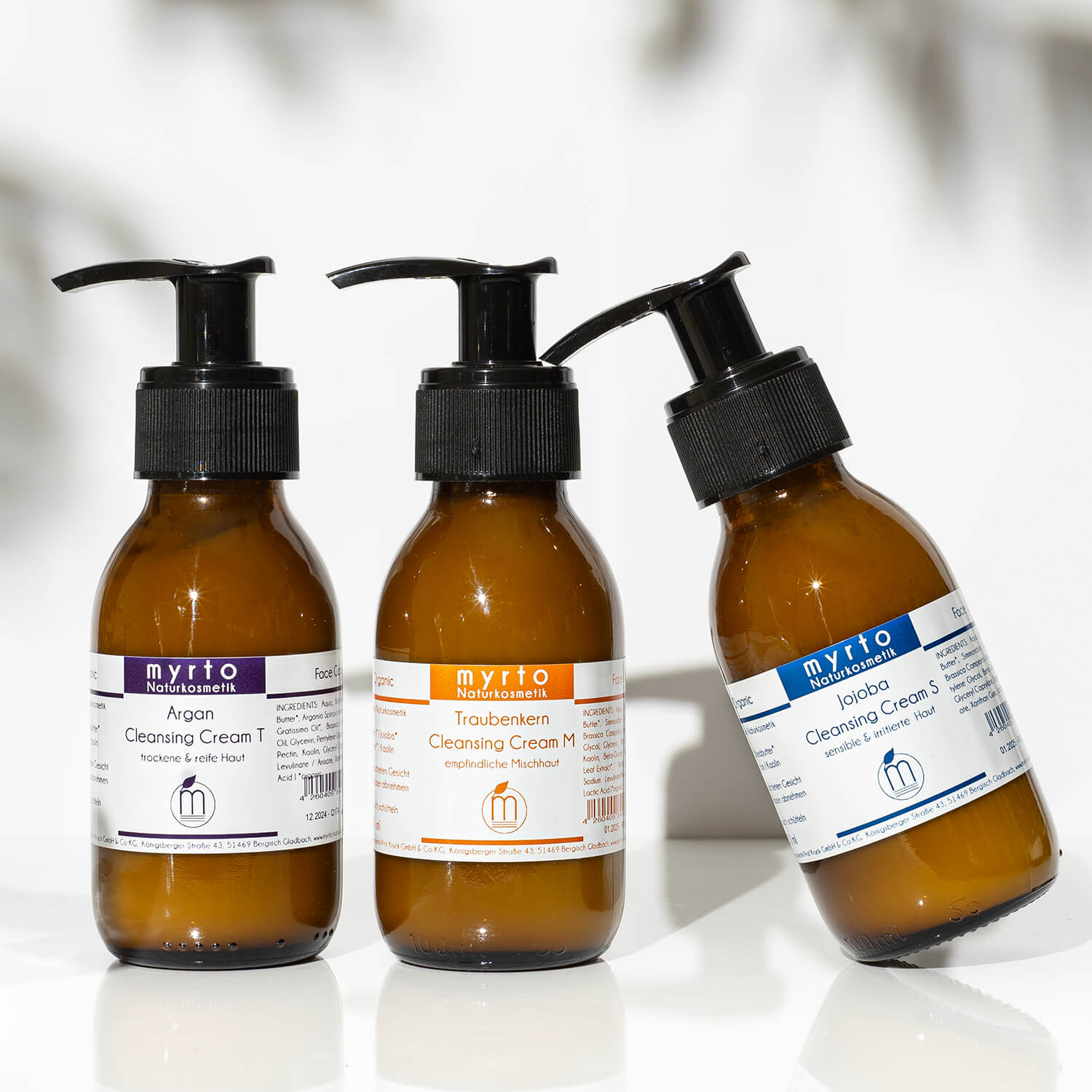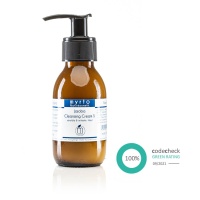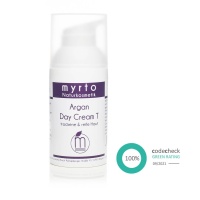The skin's microbiome, also known as skin flora, plays an important role in healthy and beautiful skin. More and more new research in recent years has shown how the microbiome, when in balance, ensures holistic well-being, fends off skin-damaging factors and sustainably improves your skin's appearance.
What is the skin's microbiome?
The skin microbiome is the totality of all microorganisms or microbes on the skin. As part of the skin barrier, it consists of more than 10,000 different types of microorganisms that live on the skin and protect it from the penetration of pathogens and allergens. Most are single-celled organisms or consist of only a few cells. The skin flora includes various bacteria, fungi and viruses that densely populate the surface of the skin. They are part of the skin's own protective mechanism, which ensures that the bad (pathogenic) germs do not get out of hand, displace the good microorganisms and are kept in check by them.
The composition of the skin microbiome varies from person to person. It differs depending on the skin type and skin area (e.g. hands, feet, back, face, scalp, armpits, intimate area). Incidentally, the skin microbiome of women has a significantly higher diversity of microorganisms than that of men.
Amazingly, it is precisely the uniquely delicate balance of "good" and "bad" Microbes that limit each other to protect the skin in a natural way.
What is a disturbed skin flora?
A healthy skin flora consists of a variety of microorganisms such as bacteria, fungi and viruses that live in a harmonious balance with one another and play an important role in protecting the skin. "Good" bacteria (such as Staphylococcus epidermidis) are present in sufficient numbers and keep "bad" bacteria (such as Propionibacterium acnes) in check. If the skin flora is disturbed, potentially harmful microorganisms such as Staphylococcus aureus or Malassezia species spread excessively and overgrow the healthy microbiome.
Miscolonization of the microbiome can unbalance the skin's immune system, making skin diseases such as acne, eczema, rosacea or seborrheic dermatitis more likely.
What skin diseases can occur with a disturbed microbiome?
If the microbiome is not intact, skin problems are more likely to occur as a result of a disturbed balance between beneficial and harmful microorganisms. These skin problems are, for example:
-
Acne
Acne with inflammatory pimples, redness and enlarged pores is characterized by an excessive colonization of the skin with propionibacteria. The fat-loving bacteria are mainly found in the sebaceous glands, split free fatty acids from the sebum and thus promote further inflammation. -
Rosacea
The chronic inflammatory skin disease with reddish discoloration in the cheek and nose area is typically associated with an altered skin flora. In addition to bacterial inflammation of the hair follicles, an infestation of the sebaceous gland follicles by Demodex mites is suspected as a trigger. -
Psoriasis
Psoriasis is associated with a reduced diversity of the skin microbiome. This means that fewer different types of microorganisms are present on the skin. Instead, an increase in potentially harmful germs such as Streptococcus pyogenes, Staphylococcus aureus and, in some cases, Malassezia yeasts has been observed, which leads to chronic inflammation. This inflammation can irritate the skin, cause redness and itching and further worsen the dryness. -
Atopic eczema (neurodermatitis)
An imbalance in the skin flora impairs the skin's barrier function and causes the immune system to react excessively to harmless environmental stimuli. In neurodermatitis, high concentrations of Staphylococcus aureus have been found in the microbiome, while its counterpart Styphylococcus epidermidis and antimicrobial peptides are reduced. -
Fungal infections
Fungal infections are usually characterized by redness, swelling, intense itching, flaky and weeping areas of skin. Normally harmless fungi such as Malassezia, which do not cause problems in small numbers, overgrow the skin flora. They destroy the balance of the microbiome by allowing these fungi to multiply excessively and cause infections. -
Seborrhoeic eczema
Seborrhoeic eczema, also known as seborrhea, is a chronic skin problem that particularly affects the scalp, but can also affect the face, ears and chest area. Seborrhoeic eczema is typically associated with an overgrowth of yeast fungi of the Malassezia genus. Seborrhoeic dermatitis is typically accompanied by increased oiliness of the scalp, oily dandruff, redness and itching.
What factors damage the skin microbiome?
The balanced symbiosis of the different microorganisms forms the healthy skin environment. It strengthens the skin's protective layer and is a crucial factor for your skin's health and protection against infections. These factors, among others, have a negative effect on the skin's own microbiome:
-
Excessive and aggressive skin cleansing: Frequent washing with aggressive soaps, hot water or the use of disinfectants kills beneficial bacteria and throws the skin's flora out of balance. Frequent washing with hot water also dries out your skin and disrupts the microbiome.
-
Antibiotics: The use of antibiotics not only destroys harmful bacteria, but also beneficial bacteria on the skin and in the body, which leads to incorrect colonization of the skin (dysbiosis).
-
unbalanced diet: A diet with a lot of sugar, unhealthy fats and little fresh food also damages the skin's microbiome.
-
Environmental influences: Air pollution from fine dust or Excessive sun exposure can disrupt the skin microbiome.
-
Stress and sleep problems: Chronic stress and sleep problems weaken the immune system and affect the balance of the skin flora.
-
Synthetic preservatives in skin care: The use of skin care products with synthetic preservatives such as parabens damages the microbiome.*
-
Abrasive peelings: Frequent peeling of the skin with abrasive peeling agents brings the skin flora out of balance.
What care strengthens your skin's microbiome?
With the right care and the right active ingredients, you can use the microbiome as a natural protective shield for your skin. strengthen them, protect them from damage and stabilize their delicate balance:
Mild cleansers
Choose a skin cleanser that is free of aggressive surfactants such as Sodium Lauryl Sulfate (SLS) or Sodium Coco Sulfate (SCS). These highly foaming substances disrupt the natural balance of the skin flora by removing both harmful and beneficial microorganisms.
A good alternative to the usual facial cleansing is the surfactant free Cleansing Cream or oil cleansing with the myrto Deep Cleansing Oil.
Restore the slightly acidic pH value (approx. 4.5 to 5.5) on the skin
Use cleansing products with a pH value that corresponds to the skin's natural pH value (approx. 4.5 to 5.5). This helps to maintain the skin's acid mantle, which is important for a healthy microbiome. Incidentally, all myrto products are set to such a skin-neutral, slightly acidic pH value.
Skin care with prebiotics, probiotics and postbiotics
-
Probiotics
Probiotic products contain live bacteria. These microorganisms can have a positive effect on the balance of the microbiome. Probiotic-based ingredients include lactic acid bacteria, Lactobacillus ferment, bifidobacteria, Streptococcus thermophilus, Vitreoscilla, yeast extract or Saccharomyces. -
Prebiotics
Prebiotic active ingredients promote the growth and activity of beneficial microorganisms on the skin. They help to inhibit the growth of pathogenic germs. The prebiotics in myrto organic cosmetics include, for example, pectin from plant fibers and innovative beta-glucan from oats, which are contained in all myrto facial creams and facial serums. Beta-glucan is known for its immune-modulating and skin-soothing properties. It is used to strengthen the skin barrier and reduce inflammation.
-
Postbiotics
Postbiotic active ingredients include hyaluronic acid, lactic acid, amino acids, proteins, phospholipids as precursors of ceramides and enzymes obtained through bacterial fermentation.
To achieve the best possible results in your skin care, a combination of prebiotic and postbiotic active ingredients is optimal. Both prebiotics and postbiotics bring the skin back into its natural balance. While prebiotics promote the "good" bacteria on the skin, postbiotics primarily have an antioxidant effect. They support a healthy microbiome, moisturize the skin and reduce the effects of harmful environmental influences.
With a combination of prebiotic, probiotic and postbiotic ingredients, you will achieve the best results to soothe sensitive and reddened skin, to better protect your skin against environmental stress and to improve moisture balance.
Nutrition for a healthy microbiome
Skin and intestines are closely connected, as new scientific findings show. The body's own immune system acts as a mediator between the so-called "gut-skin axis". Studies show that the intestinal microbiome has a decisive influence on the skin's immune system.
A skin-healthy diet should be rich in probiotic foods such as yogurt, kefir, sauerkraut and fermented vegetables. The microorganisms they contain, such as Lactobacillus acidophilus, Bifidobacterium bifidum or Lactobacillus rhamnosus, not only stabilize the intestinal microbiome, but they can also be helpful in inflammatory skin diseases such as acne and eczema.












